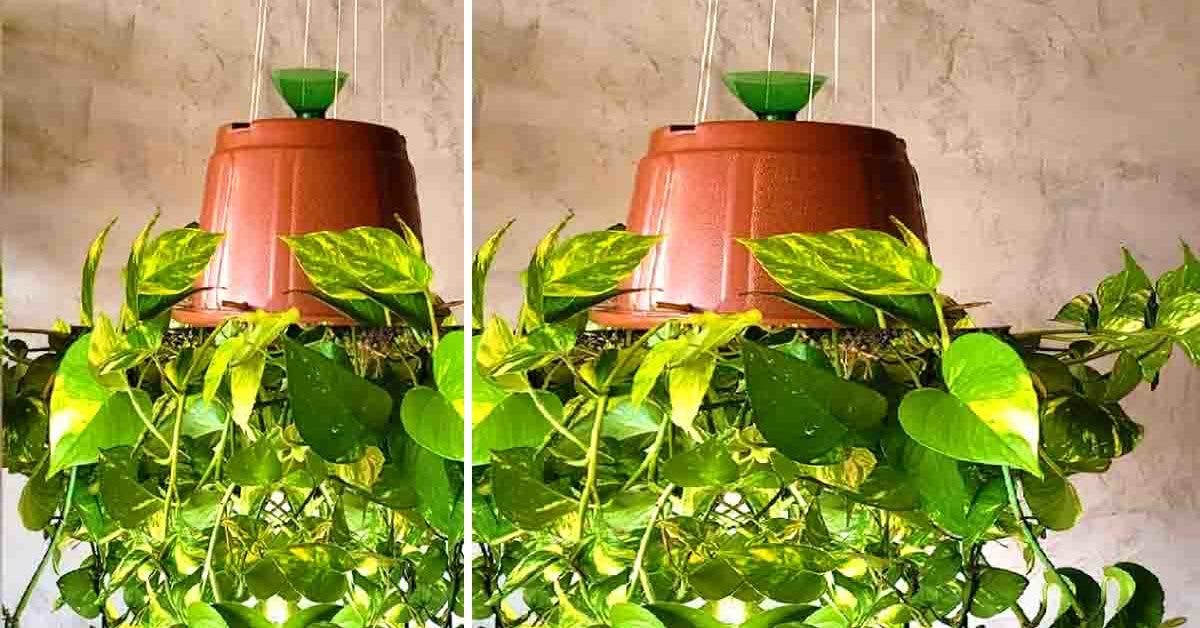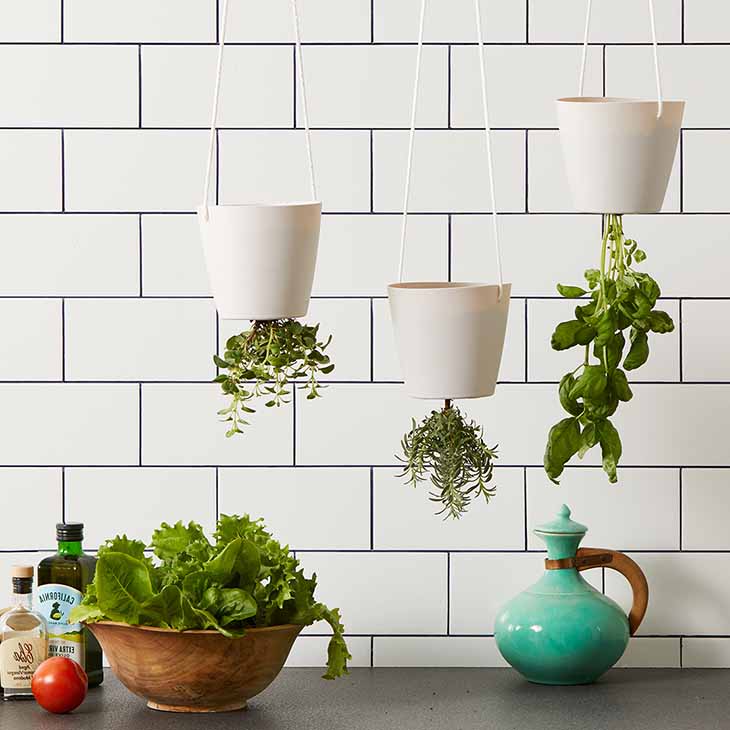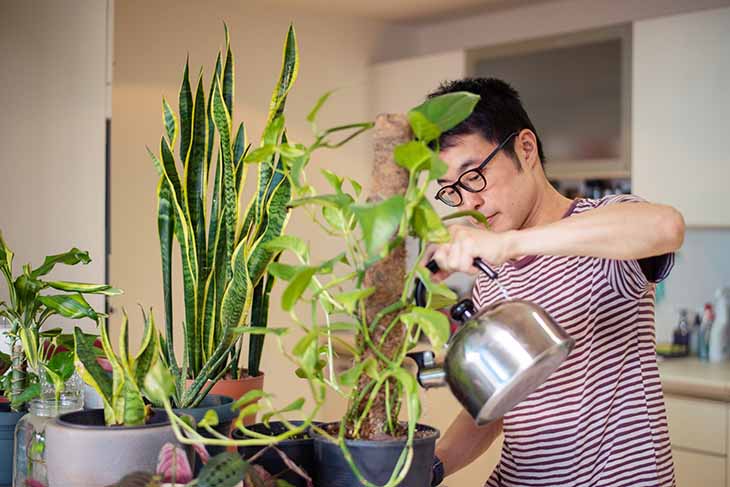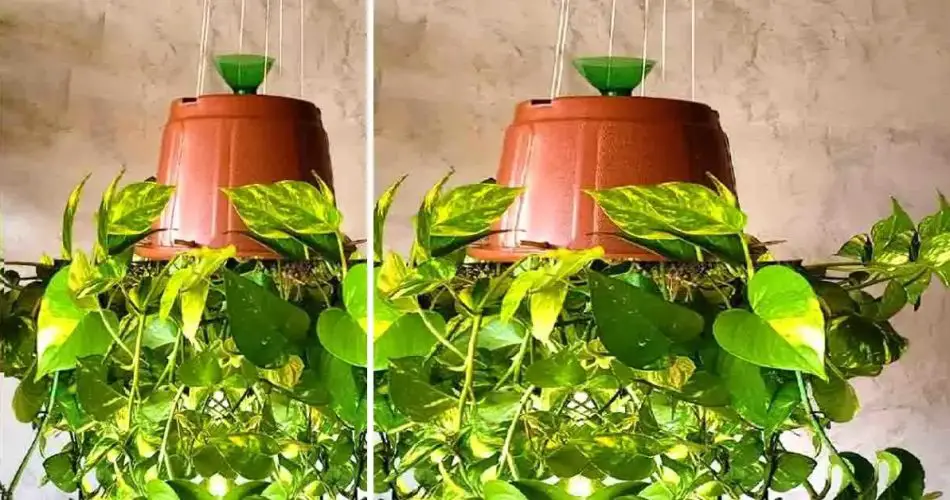Upside-down planting is an innovative and exciting way to grow plants, especially for those looking to save space, create a unique decor, or even explore a new approach to plant care. The concept is simple: suspend your plants in inverted pots, and watch them thrive with minimal space usage. This method has gained popularity for its space-saving benefits and ability to create a distinctive look in any room.

Here’s how to plant upside down and grow healthy, flourishing plants without any special expertise:

Why Plant Upside Down?
- Space-Saving: Inverted pots don’t take up any floor space or room on windowsills, making them perfect for small apartments or spaces with limited surfaces.
- Water Retention: The soil in upside-down pots retains moisture longer, meaning you won’t have to water your plants as often. Plus, it helps distribute water and fertilizer more efficiently, keeping the plant nourished.
- Aesthetic Appeal: Hanging plants create a unique look, turning a simple plant setup into a striking decor feature.
- Versatility: You can use inverted pots for almost any plant—indoor and outdoor varieties alike.
How to Plant Upside Down: Step-by-Step Guide

1. Choose Your Plant
Not all plants are suited to upside-down planting, but many, especially trailing or vining plants, do very well. A great choice for beginners is Pothos (Devil’s Ivy), which is a resilient and fast-growing plant. It thrives in moderate light and is easy to care for.
2. Get the Right Pot
- Materials: Use a plastic pot that’s sturdy enough to support the plant and the soil. The pot should have drainage holes to prevent waterlogging.
- Additional Equipment: You’ll also need nylon thread or strong string to hang the pot, a jute bag (optional), wooden sticks (for supporting the plant), and a watering bottle.
3. Prepare the Pot for Hanging
- Take a plastic pot and thread nylon string through the drainage holes at the bottom of the pot.
- Tie knots at the ends of the string to secure them.
- Create a large hole in the center of the base of the pot (where the plant will “hang”), and then make smaller holes along the circumference of the pot.
4. Fill the Pot with Soil
- Fill the pot halfway with soil suitable for your plant (for Pothos, use a standard potting mix).
- Gently place the roots of the plant into the pot, ensuring that the root ball is fully covered by the soil. You may need to add a little more soil to ensure the roots are well-packed.
5. Secure the Plant in the Pot
- Insert a piece of jute bag into the soil to keep the soil in place and help with water retention.
- Insert wooden sticks or small branches into the holes made along the edge of the pot. These sticks will help guide the plant as it grows downward in a cascading fashion.
6. Hang the Pot
- Using the nylon threads, hang the pot in a location where it will receive indirect light—Pothos, for example, thrives in bright, indirect sunlight but not in direct sun.
7. Watering Your Plant
Watering is simple, and it’s one of the easiest aspects of upside-down planting. To water your plant, insert the neck of a bottle into the central hole at the base of the pot. The water will flow down into the soil slowly, ensuring that the plant receives an even distribution of moisture.
8. Maintenance
- Pruning: Regularly prune the plant to encourage healthy growth, especially for trailing or vining plants like Pothos.
- Watering: Check the soil regularly, but with the upside-down pot, you’ll find that the water stays moist longer, reducing the need for frequent watering.
- Fertilization: Add diluted liquid fertilizer through the same hole when watering to nourish your plant. The upside-down setup helps the fertilizer stay in the soil longer, giving the plant a steady supply of nutrients.
Additional Tips for Growing Plants Upside Down
- Choose Trailing or Climbing Plants: Vining plants, such as Pothos, English Ivy, Spider Plants, and Sweet Potato Vine, are great for upside-down pots because they grow downward or trail, which makes them perfect for this technique.
- Ensure Proper Light: Make sure the plant gets the right amount of sunlight. Some plants, like Pothos, prefer indirect light, while others, like certain herbs, may require more direct sunlight.
- Watering Equipment: A watering bottle with a long neck works best to deliver water to the base of the pot without spilling or overwatering.
Benefits of Growing Plants Upside Down
- Saves Space: Hanging pots allow you to grow plants in spaces where floor or counter space is limited.
- Unique Decor: Upside-down planting creates a modern, charming look that is both functional and visually appealing.
- Easy Maintenance: The water retention in inverted pots makes maintenance easier. You’ll find that the plants require less frequent watering, and the fertilizer stays in the soil longer, promoting healthier growth.
Conclusion
Upside-down planting is an innovative and visually appealing method for growing plants, especially in small spaces. It’s simple to set up, easy to maintain, and can add an extra touch of style to your home or garden. Whether you’re a beginner or an experienced gardener, this technique is worth exploring for its space-saving and aesthetic benefits. So why not give it a try and turn your plants upside down for a new growing experience?



